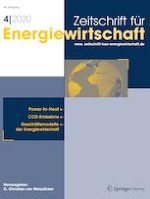04.12.2020
What caused 2019’s drop in German carbon emissions: Sustainable transition or short-term market developments?
Erschienen in: Zeitschrift für Energiewirtschaft | Ausgabe 4/2020
EinloggenAktivieren Sie unsere intelligente Suche, um passende Fachinhalte oder Patente zu finden.
Wählen Sie Textabschnitte aus um mit Künstlicher Intelligenz passenden Patente zu finden. powered by
Markieren Sie Textabschnitte, um KI-gestützt weitere passende Inhalte zu finden. powered by
